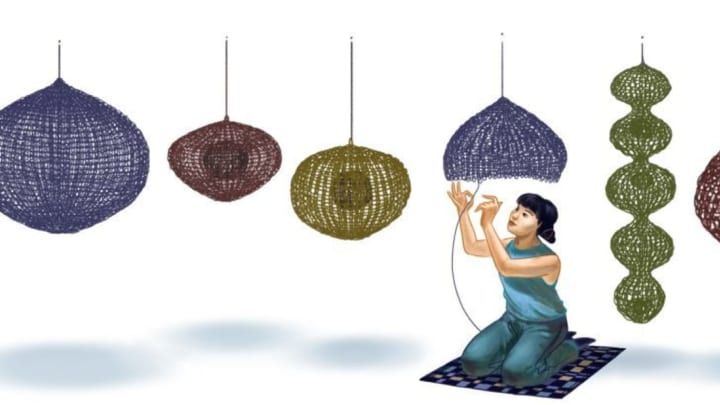5 Fast Facts About Ruth Asawa

May 1 kicks off Asian-American Pacific Islander Heritage Month, and Google is marking the occasion with a doodle honoring Ruth Asawa, a Japanese-American artist who shook the art world with her wire sculpture techniques. Here are some facts about the influential sculptor, who died in 2013 at age 87.
1. Ruth Asawa learned art in an internment camp.
Ruth Asawa was born in Southern California in 1926 to a family of farmers. Life changed drastically for the Asawas during World War II, as it did for the 120,000 Japanese Americans living in the western U.S. In 1942, Ruth was interned at the Santa Anita race track in Arcadia, California, along with her mother and siblings. Animators from Walt Disney Studios were also kept at the camp, and they gave her art lessons during the five months she lived there. After her family was transferred to an interment camp in Arkansas, she continued to work on her painting and drawing.
2. Ruth Asawa studied at Black Mountain College.
Her struggles didn't end with World War II. Asawa received a scholarship to study to become an art teacher at the Milwaukee State Teachers College, only to be barred from student-teaching due to her ethnicity. She continued her studies at the the Black Mountain College in North Carolina. The experimental school was known for welcoming students from persecuted groups: It was a sanctuary for Jewish academics fleeing Nazi Europe, and it enrolled its first African-American student a decade prior to Brown v. Board of Education.
3. Ruth Asawa's wire sculpture technique made her famous.
Asawa found her artistic niche in wire sculpture. Borrowing techniques from basket weavers in Mexico, she used wires to create abstract, 3D structures. According to Google's blog, she cited such inspirations as "plants, the spiral shell of a snail, seeing light through insect wings, watching spiders repair their webs in the early morning, and seeing the sun through the droplets of water suspended from the tips of pine needles while watering my garden."
4. Ruth Asawa designed memorials for Japanese internees.
The artist overcame adversity, both as a Japanese American and a woman derided for doing "feminine handiwork," to leave a lasting impact on the art world. She designed two memorials to Japanese internment: the Internment Memorial Sculpture in San Jose and SF State University's Garden of Remembrance.
5. Ruth Asawa founded an art school.
Asawa stayed committed to arts education throughout her life, and founded a public arts high school called the San Francisco School of the Arts in 1982. It's since been renamed the Ruth Asawa San Francisco School of the Arts.